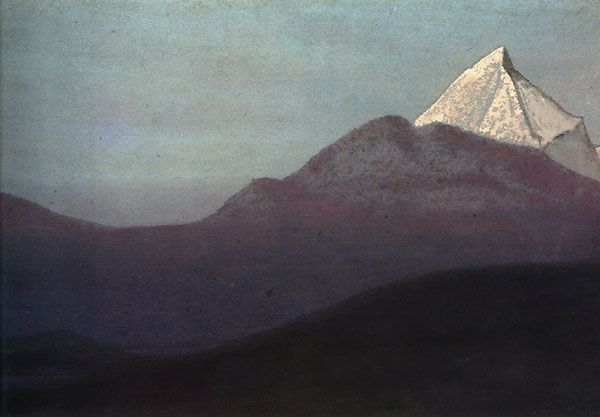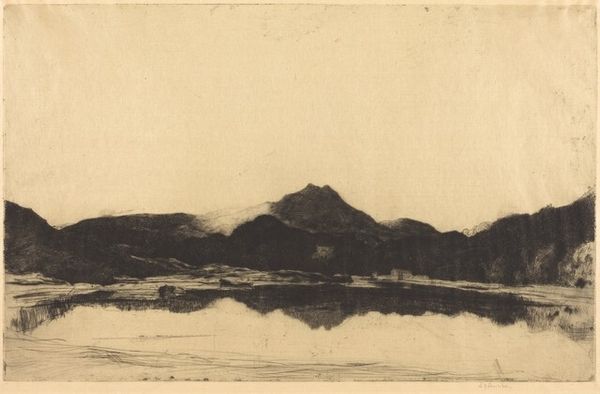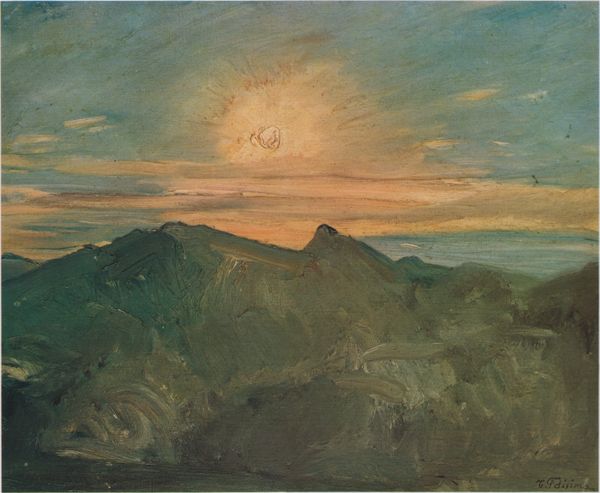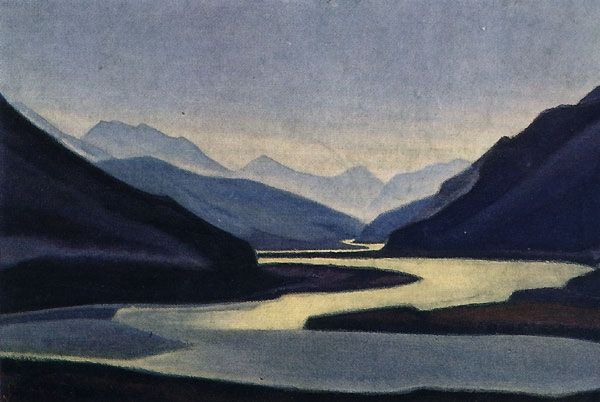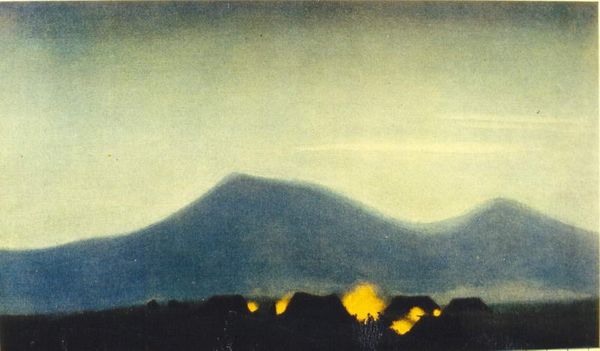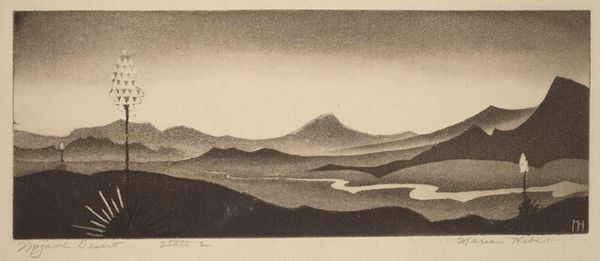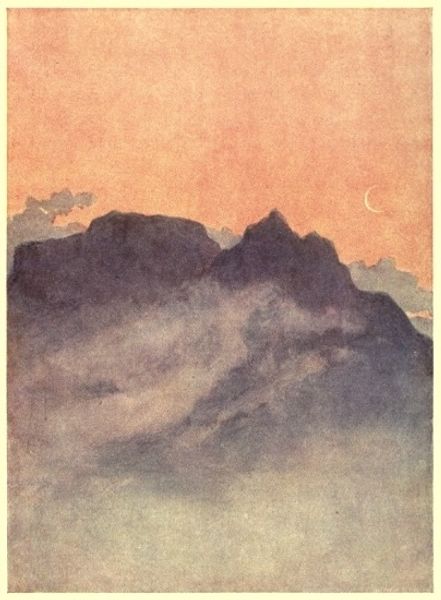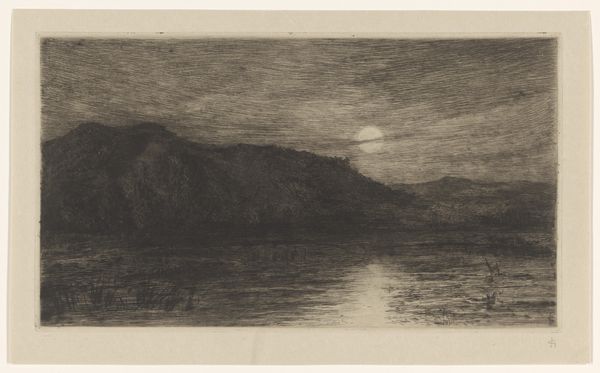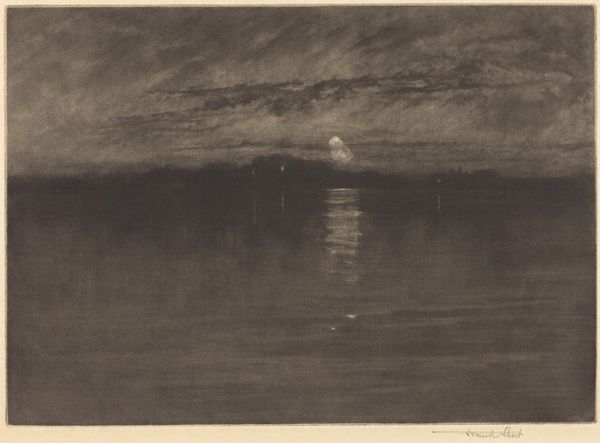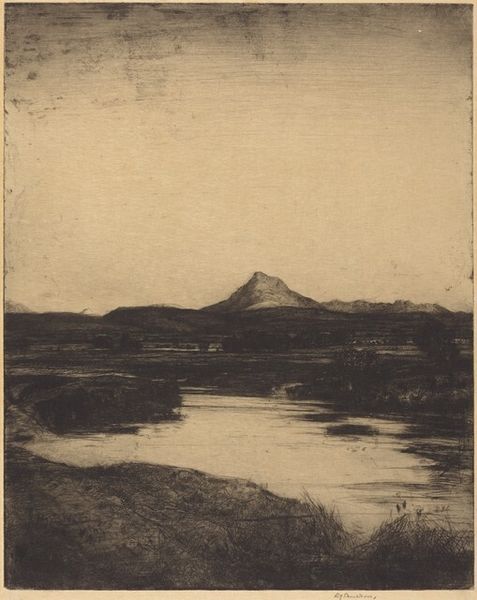
plein-air, watercolor
#
plein-air
#
landscape
#
nature
#
watercolor
#
romanticism
#
mountain
Copyright: Public domain
Editor: This is Elizabeth Thompson’s watercolor painting, “Croagh Patrick.” It’s a serene, almost somber, landscape dominated by a large mountain. What compositional elements stand out to you? Curator: I immediately observe the tripartite composition. The artwork is distinctly divided into three horizontal bands. We have the fore, middle and background. Consider also the vertical thrust of the peak which repeats itself with diminishing force across the other "hills". Editor: So the artist uses the rule of thirds, essentially? And, if so, does that enforce a feeling of classical landscape composition? Curator: Partially. One must observe how that rule impacts and relates to tonal qualities: how do light, color and value interact within this rigid geometric structure to enhance or devalue any atmospheric tension? Editor: The top portion feels weightier, darker, drawing my eye upward toward that pinpoint of light on the mountain. Curator: Observe then, how value impacts directional movement. The peak itself seems almost to pierce that dark tonal stratum due to an effect of iridescence that both breaks down our tripartite design whilst simultaneously binding them by luminosity. This may or may not imply spatial compression or some subtle statement concerning time itself. Editor: I hadn't noticed the compression before, but I see it now. Focusing on composition first really clarified Thompson's intent with depth and luminosity. Thanks! Curator: The formal exercise, I find, invariably reveals elements hitherto unnoticed upon first encountering the image. A pleasure.
Comments
No comments
Be the first to comment and join the conversation on the ultimate creative platform.

